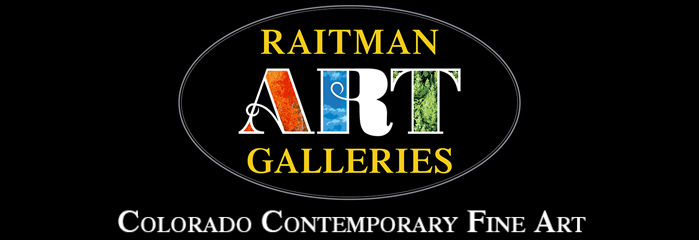Jared and Nicole Davis Artist Review
History

Victoria and Albert Rotunda Chandelier, 1999
Dale Chihuly

Jared and Nicole Davis
Aesthetics
Principals of Art:
Space: Space is demonstrated to create dimension in the composition. Jared and Nicole work with the positive space of the glass and the negative surrounding space to create balance and interest in their sculptures. This is evident in Desert Sentinel Turquoise with the pocket of negative space in the center. This interesting detail provides space in the composition as well as visual interest.
Color: Bright vibrant colors set against organic and natural colors make the Davis’s sculptures pop. Every color comes from layering blown glass and powdered glass that both creates texture and variety of color. Their color use often reflects the colors found in nature, tying the natural world to the blown glass.
Shape: The shapes created seem to defy gravity and logic in some of Jared and Nicole’s glasswork. Soft curves are found throughout their vessels, sentinels, and antlers. Shapes are defined to lead the eye and build unexpected glass forms.
Form: Circle is to shape as sphere is to form. The form of the glasswork is masterly controlled by Jared and Nicole as the piece is blown in molten glass. These forms reflect the natural world and capture it in unexpected ways.
Value: Value relates to the tint/shade of a hue (color). Every color can be tinted by adding white or shaded by adding black. The purpose of considering value in a work of art is to help create both dimension and a mood. Changes in value come from the changes in the depth of colors applied as powdered or molten glass. These changes in value serve to heighten detail and add dimension in the glass.
Texture: Glass is typically smooth, but the powered glass that is applied can be textured if the artist chooses. Desert Sentinel Turquoise is smoothed and reflective, while other pieces will be textured to reflect tree bark. The variation makes the artworks interesting to view.
Principals of Design:
Balance: Perfectly balanced, the glasswork of Jared and Nicole seems impervious to time and gravity. They achieve compositional balance though proportion, detail, and color changes. In Desert Sentinel Turquoise the upper section is pocketed with an empty space that balances the smaller in size lower portion.
Unity: The unity of a piece is what creates a sense of completeness. The colors and surface unify Jared and Nicole’s glasswork. In Desert Sentinel Turquoise the smooth water like surface unifies the glass together into one flowing form with many variations of color.
Variety: Variety is what adds interest into a work of art. The most apparent way Jared and Nicole add visual variety is through the change in texture and color. Desert Sentinel Turquoise has flowing changes of color that blend and flow together making every portion a beautiful composition of color that adds variety.
Emphasis: Emphasis is what the artist uses to create a focal point. Focal points can vary viewer to viewer, but a truly successful composition will have one clear focal point that the eye is continually drawn to over and over again. Color often serves to demonstrate the focal point of a glass sculpture. The bright reds set against the empty pocket in Desert Sentinel Turquoise draw the eye.
Movement: Movement implies motion is a snapshot of time. Jared and Nicole want the viewers eye to move as they observe one of their works of art. The blending of colors that flow around Desert Sentinel Turquoise make the eye move around the sculpture taking in all of it’s beauty.

Desert Sentinel Turquoise
Jared and Nicole Davis
Pattern: Think of pattern as the visual skeleton that organizes the parts of a composition. This underlying structure uses consistent and regular repetition. You can have both natural and man made pattern. At the top of Desert Sentinel Turquoise there are thick horizontal bands of color that fade in definition as they descend down the piece. This subtle pattern adds a rhythm that leads the eye.
Perspective: As the viewer walks around Jared and Nicoles work, they are treated to new perspectives. As their view changes, new angles, colors, and shapes will arise.
Production
To start the glass blowing process, the glass is placed in a furnace that heats it to a temperature of 2000 degrees, making it malleable. To gather the glass the artist inserts the end of the blowpipe into the furnace and rolls it in the molten glass so it attaches to the glass pipe. Next the artist rolls the molten glass on a flat metal slab called a marver. The marver is there to help control the shape and temperature of the glass. The glass is taken back and forth from the marver to the hot chamber that reheats the glass so it become malleable once again.
To add color and design, the glass is dipped in crushed colored glass which fuses to the main glass piece. Once the main piece has been fused with the powdered colored glass, it is rolled and molded on the marvel once again.
Finally the artists is ready to blow the glass to give the piece its final shape and size. The artists blows into their end of the blowpipe while rotating the pipe, creating a bubble of glass. Continually the glass will be needed to be rewarmed in the hot chamber so it will remain malleable as the artist blows.
The final step is to remove the glass from the blowpipe. Steel tweezers called jacks are used to separate the bottom portion of the blown glass while rotating the blowpipe. With one solid tap the glass breaks free from the blowpipe. The glass is then left to cool in annealing oven so it can be cooled slowly over several hours to prevent cracking
.

 Delicate Arch Desert Vista
Delicate Arch Desert Vista
